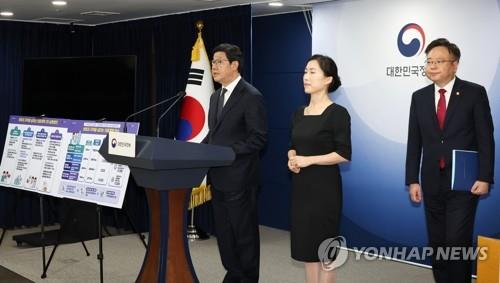- California Assembly OKs highest minimum wage in nation
- S. Korea unveils first graphic cigarette warnings
- US joins with South Korea, Japan in bid to deter North Korea
- LPGA golfer Chun In-gee finally back in action
- S. Korea won’t be top seed in final World Cup qualification round
- US men’s soccer misses 2nd straight Olympics
- US back on track in qualifying with 4-0 win over Guatemala
- High-intensity workout injuries spawn cottage industry
- CDC expands range of Zika mosquitoes into parts of Northeast
- Who knew? ‘The Walking Dead’ is helping families connect
Gov’t to inject 400 bln won next year to improve trainee doctor schemes
The government plans to inject 400 billion won (US$294 million) next year to improve trainee doctor schemes, a presidential committee on medical reform said Friday, amid a protracted walkout by junior doctors.
The planned spending aims to upgrade the quality of education for junior doctors, said Noh Yun-hong, head of the presidential committee.
Over the next five years, the government plans to spend a total of 2 trillion won to improve trainee doctor schemes, Noh said.
“The government will continue efforts to seek actual improvements at training hospitals as the budget is implemented next year,” Noh told reporters.
The committee also proposed increasing cost coverage rates by the state health insurance system in essential medical fields within three years.
The proposal aims to bolster compensation for six medical fields, including emergency rooms, pediatrics and obstetrics.
The move is aimed at improving working conditions at hospitals at a time when thousands of trainee doctors have left their worksites in late February in protest of the government’s push to increase the number of medical students.
The committee said it seeks to adjust cost coverage rates in some 3,000 treatment procedures over the next three years.
In addition, the committee said it will set up a new consultative body this year to discuss medical school enrollment quotas for 2026.

The government has already finalized a plan to increase the medical school quota by about 1,500 students next year in an effort to address the shortage of doctors in essential services.
The medical community has been reiterating that the government should fully reconsider the hike before engaging in any negotiations.
Last month, hospitals processed the resignations of nearly 7,700 trainee doctors who have been protesting the medical school quota increase since February, allowing departing doctors to seek new jobs and enabling hospitals to recruit fresh trainees.
However, the government’s efforts to normalize the medical system encountered obstacles, as the medical community largely resisted hospitals’ attempts to recruit new trainees.











